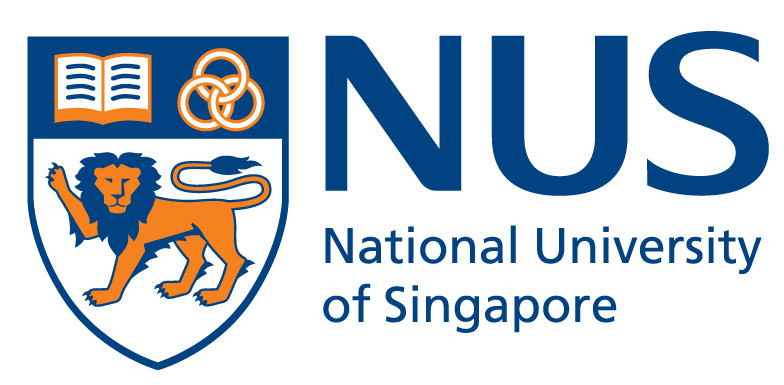Building Resilience is Key to Good Mental Health: NUS Youth Epidemiology and Resilience Study
Published: 26 Apr 2023
Resilience holds the key to good mental health, Singapore’s first nationwide epidemiology study to understand and establish the mental health and resilience of Singapore’s adolescents, between the ages of 10 to 18 years old, has shown.
The study looked at four key areas – mental health, resilience, identity development and media activity use. With data collected over the COVID-19 pandemic period from 2020 to 2022, the study involved 3,336 young people aged 10 to 18 and attempts to describe the association of resilience, risks, and protective factors in developing internalising and externalising symptoms, and how having resilience can mitigate mental health distress.
Youth mental health and resilience
The association between mental health and resilience is well documented in current literature and the YEAR study affirms this important relationship. Respondents in the YEAR study with higher good mental health scores also had higher resilience scores.
Respondents were assessed on their mental health symptoms based on a youth self-reported survey. About one in three youth in Singapore reported internalising mental health symptoms such as depression, anxiety and loneliness, with those aged 14 to 16 reporting more serious symptoms. Meanwhile, roughly one in six young people said they experienced externalising mental health symptoms, such as hyperactivity, rule-breaking, aggression.
Respondents who self-reported clinical-level mental health symptoms were then invited for an in-depth face-to-face or online assessment in the second phase of the study, which aimed to establish the prevalence of mental health disorders among adolescent respondents. Adolescent respondents and their parents also responded to survey questions on parent-child dynamics and quality of life.
From the YEAR study, it was reported that one in 10, or 12% of adolescents met full diagnostic criteria for having at least one current mental health disorder, while 6% of adolescents had previously met criteria for at least one disorder more than a year ago and are no longer meeting the criteria for the same disorder, suggesting that their condition may have improved.
Resilience is the ability and capacity of an individual to prepare for, withstand, adapt and progress in the face of adversities. The Singapore Youth Resilience Scale (SYRESS) measures the multi-dimensional aspects of resilience, using 10 different domains such as Perseverance/Commitment, Positive Self-image/Optimism, Relationship/Social Support, Humour/Positive Thinking, Emotional Regulation, Spirituality/Faith, Personal Confidence/ Responsibility, Personal Control, Flexibility, and Positive Coping. These 10 domains can be seen as assets that can strengthen overall resilience.
The resilience scores differed significantly across the age groups for most of the domains. Among the higher percentile groups, the resilience scores are stable across the age groups. However, there is an upward trend in resilience scores in the lower 10th percentile in each age group, indicating that resilience can be improved over time as the youth, especially those in the vulnerable “tween years”, mature and accumulate life experiences as they age. It is also important and an opportunity for society to reach out to the lower resilience groups to provide early interventions, instead of resorting to knee-jerk reactionary measures.
Parents versus adolescents’ self-reported mental health symptoms
The study also found that parents were less likely to identify mental health symptoms in their children. About 10% of parent respondents reported observing clinical-level mental health symptoms in their children, compared to adolescents’ self-reported mental health symptoms. This suggests that there is room for parents to be involved more deeply in identifying and supporting their children’s mental health, such as by raising awareness of mental health literacy among parents.
Identity Development
The Assessment of Identity Development of Adolescence (AIDA), is a new, precise kind of self-reported clinical instrument that has been newly incorporated in Singapore to enable differentiation between health and impaired identity development. Tweaked and customised to better reflect the local language and cultural practices in Singapore, the questionnaire measures discontinuity and incoherence, features of identity diffusion, to better understand the underlying reasons that often drive anxiety and depression and cause disturbance to the identity development of Singaporean adolescents.
Identity diffusion was found to be strongly associated with higher Youth Self-Report (YSR) internalising, externalising and total problem scores, validating the AIDA as a clear and effective indicator of mental health symptoms in youth that can be used in clinical practice.
Identity development is a critical phase of emotional and psychological growth that starts at puberty. However, there are instances where identity disturbance occurs, such as when a person experiences discontinuity or incoherence in his sense of identity, or identity diffusion. These two domains are critical nodes in the area of identity construct and development.
Youths with higher resilience tend to possess fewer impairments in identity development, evidenced from the way identity diffusion has moderate or negative correlations with most SYRESS domains. The focus on building resilience would aid in the prevention and remedy of identity disturbances and mental health difficulties in youth.
Media Utilisation
Digital devices and media overuse and its association with youth emotional disturbance continues to be a key area of concern among parents and educators, and a subject of many adolescent studies among clinical practitioners globally.
To challenge the commonly-held assumption that the state of one’s mental well-being is highly dependent on the amount of time spent in the digital space, researchers from the YEAR study went a step further to scrutinise the productive and unproductive areas of usage of digital devices and content, and how the youths are spending their time in the digital space and the duration of use, from the multitude of digital devices that youths use daily.
Data from the self-reported Media Activity Form submitted by the youths and their parents revealed that parents largely underestimate the time and extent their youths use their digital devices daily. While the extent and length of digital use is worrying, it appears that the time spent on socialising activities and listening to music online were significantly and positively correlated with both YSR internalising and externalising problem scores. This indicates that youths usually turn to these two avenues to address their inner psychological void, to better internalise and process their emotions in a productive way. With more youths turning to digital media as a source of self-therapy and emotional regulation, parents and educators need to recognise their critical role in establishing strong foundations of media literacy and habits early in their child’s life.
Click here for the press release.

